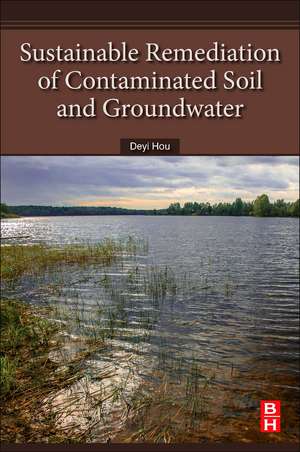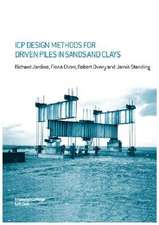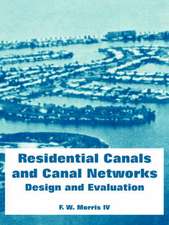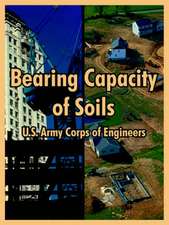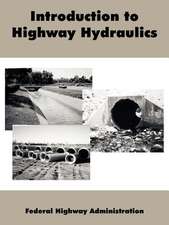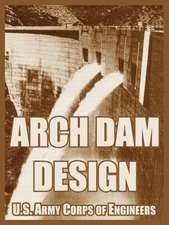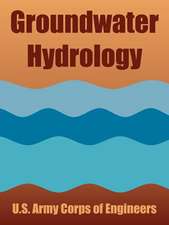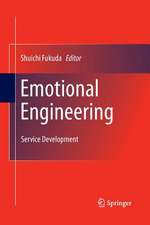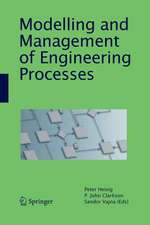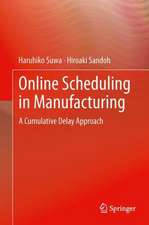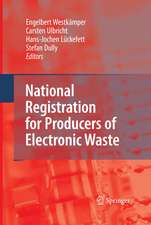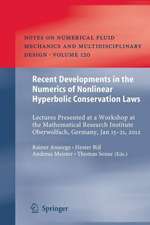Sustainable Remediation of Contaminated Soil and Groundwater: Materials, Processes, and Assessment
Editat de Deyi Houen Limba Engleză Paperback – 27 noi 2019
- Addresses materials, processes, and assessment needs for implementing a successful sustainable remediation process
- Provides an integrated approach for the unitization of various green technologies, such as green materials, cleaner processes and sustainability assessment
- Includes case studies based on full-scale commercial soil and groundwater remediation projects
Preț: 975.87 lei
Preț vechi: 1345.08 lei
-27% Nou
Puncte Express: 1464
Preț estimativ în valută:
186.75€ • 193.87$ • 155.72£
186.75€ • 193.87$ • 155.72£
Carte tipărită la comandă
Livrare economică 15-29 martie
Preluare comenzi: 021 569.72.76
Specificații
ISBN-13: 9780128179826
ISBN-10: 0128179821
Pagini: 472
Dimensiuni: 152 x 229 x 29 mm
Greutate: 0.63 kg
Editura: ELSEVIER SCIENCE
ISBN-10: 0128179821
Pagini: 472
Dimensiuni: 152 x 229 x 29 mm
Greutate: 0.63 kg
Editura: ELSEVIER SCIENCE
Cuprins
1. Green and sustainable remediation: concepts, principles, and pertaining research
2. Green and sustainable remediation: past, present, and future developments
3. Sustainability assessment for remediation decision-making
4. Best management practices for sustainable remediation
5. Green remediation by using low-carbon cement-based stabilization/solidification approaches
6. The use of biochar for sustainable treatment of contaminated soils
7. Application of slow-release materials for in situ and passive remediation of contaminated groundwater
8. Controlling secondary pollution impacts during enhanced in situ anaerobic bioremediation
9. STAR: a uniquely sustainable in situ and ex situ remediation process
10. Long-term effectiveness of in situ solidification/stabilization
11. Remedial process optimization and sustainability benefits
12. Landscape architecture and sustainable remediation
13. Phytoremediation value chains and modeling
14. The sustainability of nanoremediation - two initial case studies from Europe
15. Understanding the diverse norms and rules driving sustainable remediation: a study of positioning, aggregation, and scoping
16. Socioeconomic benefit of contaminated site remediation
2. Green and sustainable remediation: past, present, and future developments
3. Sustainability assessment for remediation decision-making
4. Best management practices for sustainable remediation
5. Green remediation by using low-carbon cement-based stabilization/solidification approaches
6. The use of biochar for sustainable treatment of contaminated soils
7. Application of slow-release materials for in situ and passive remediation of contaminated groundwater
8. Controlling secondary pollution impacts during enhanced in situ anaerobic bioremediation
9. STAR: a uniquely sustainable in situ and ex situ remediation process
10. Long-term effectiveness of in situ solidification/stabilization
11. Remedial process optimization and sustainability benefits
12. Landscape architecture and sustainable remediation
13. Phytoremediation value chains and modeling
14. The sustainability of nanoremediation - two initial case studies from Europe
15. Understanding the diverse norms and rules driving sustainable remediation: a study of positioning, aggregation, and scoping
16. Socioeconomic benefit of contaminated site remediation
